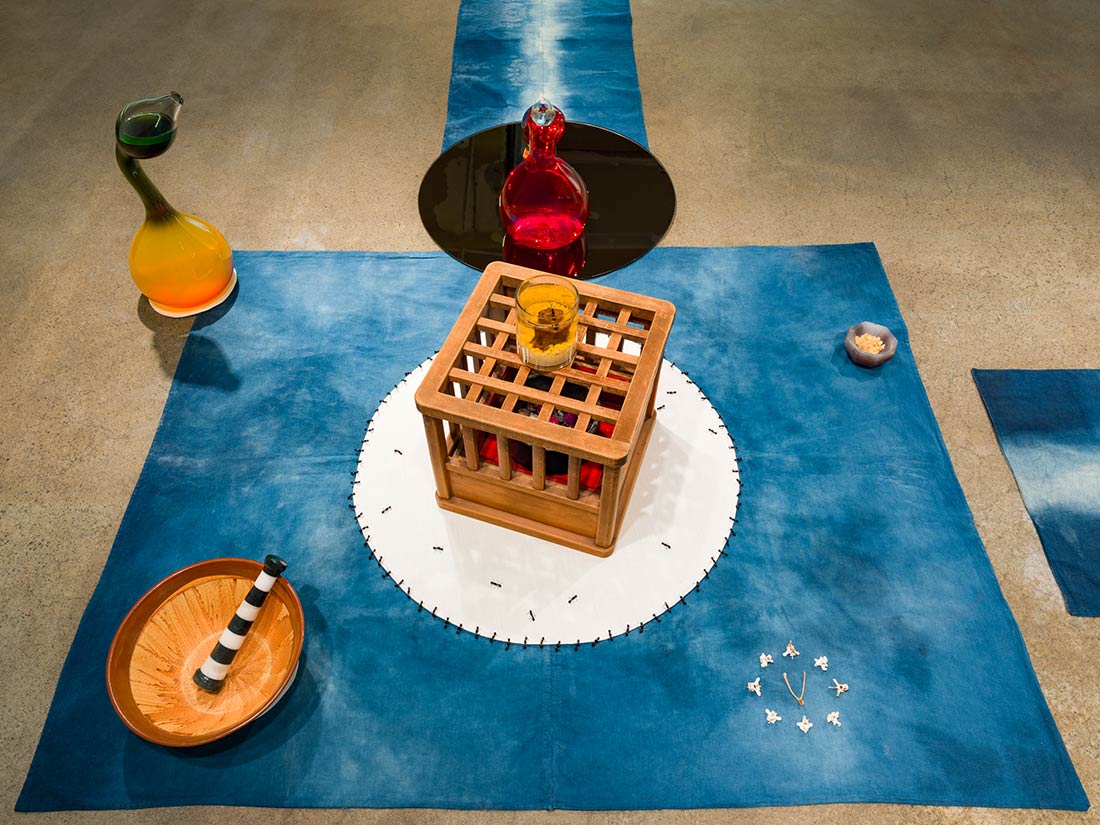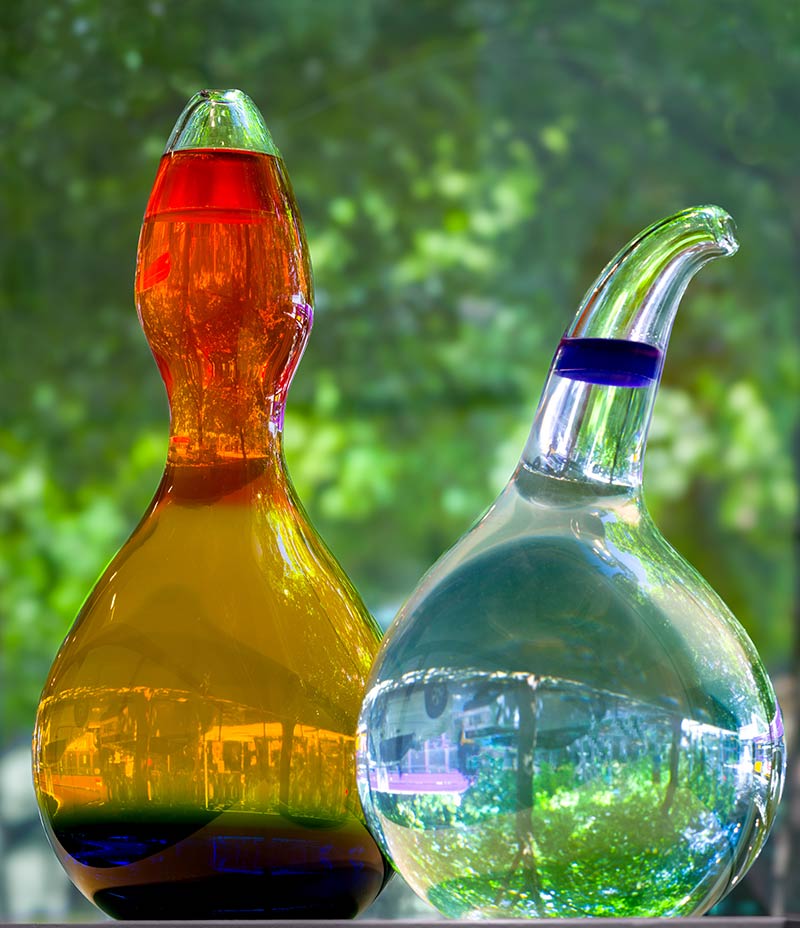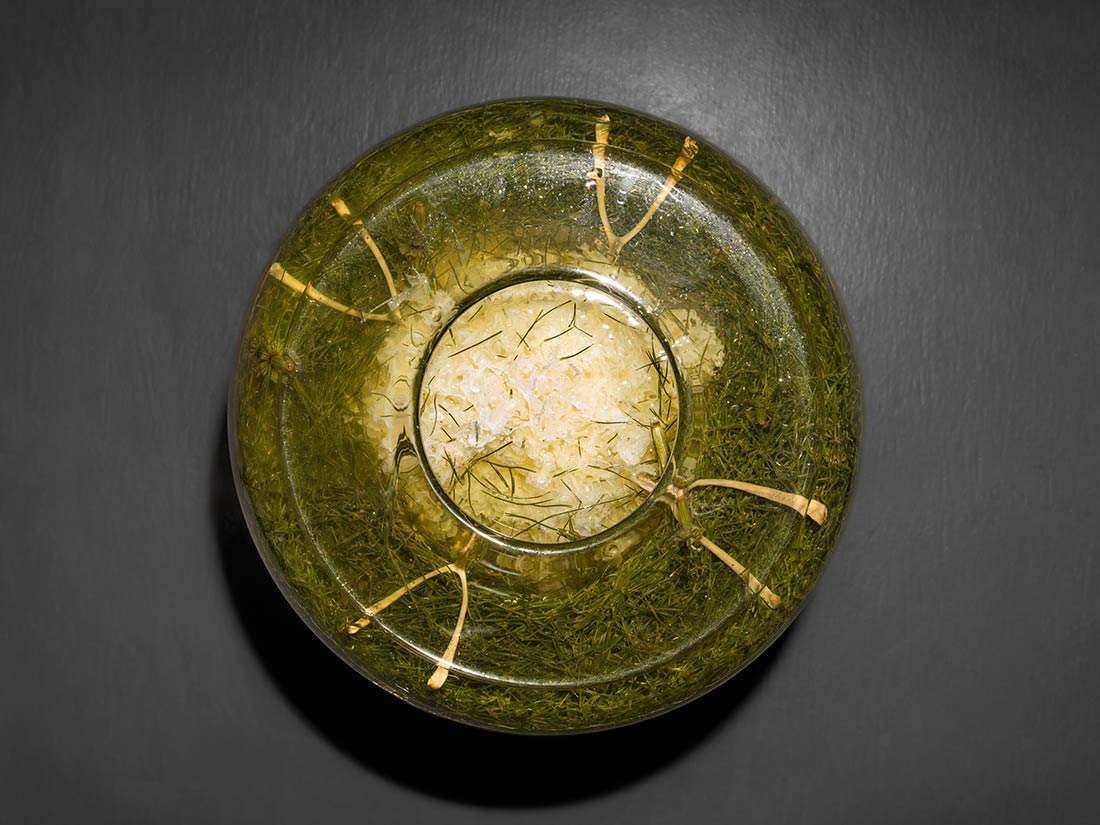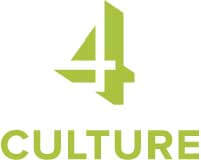Alchemy & Spells: How Mel Carter transformed earthly elements for bitter, the mourning

Four years ago, Mel Carter showed up to an emerging artist residency at Centrum with their sewing machine, expecting to make some textile work. “But I was more interested in actually connecting to the place within the space,” they realized, so they set about exploring the Fort Warden grounds—an abandoned army base, a state park, the beach.
“I just kind of experimented with a lot of weird things,” Carter says. Among them: a dried out jellyfish and bark that had fallen off the trunk of the big Madrona tree at the heart of Centrum’s campus—both of which Carter submerged in various tinctures to see what would happen.
“I definitely identify as a witch,” they say, smiling. “These are all kinds of liquid spells, colorful concoctions of tinctures, oils, syrups, like resins, remnant liquids from rituals…any kind of earthly materials that serve purposes, like for protection or retribution.”
The experimentation Carter did at Centrum ultimately led to the work currently on view in their solo exhibition at Gallery 4Culture, bitter, the mourning, which features a collection of glass vessels filled with colorful—and meaningful—natural ingredients, along with some textiles. The show synthesizes an array of influences, from ecological values to spiritual ideas and Carter’s Japanese heritage. In each of the works, Carter is performing some kind of alchemy.

The glass vessels themselves speak to transformation, too. A few years ago, Carter was helping their friend and fellow artist Francesca Lohmann to fix up a house so they could move into it when the house caught fire and burned down. “What is the element of fire trying to teach me?” they wondered.
Curiosity about fire and its powers led them to start taking glassblowing classes at Pratt Fine Arts Center, where they immediately loved the process for its physicality and tactility. “I like the movement and the choreography of it,” they say. “You’re just sweating and hot and moving all around just like the glass. There’s this dance and spatial awareness because there’s so many things to look out for—and the danger helps my brain to focus.”
Carter emphasizes that glass is alchemy: “It transforms into something magical, it reflects everything around it, but it’s also transparent, so you can see through to the other side.”
As for what goes into the vessels, Carter focuses mostly on herbalism and plants, sourcing them from farmer’s markets, migrant vendors, local BIPOC grocers and stores, people who are deeply rooted in the city. “It’s really important to me to make work that’s responsive to the place and holds a lot of the history and care that has come into these Coast Salish lands,” they say. Likewise, it matters that their work is largely biodegradable and can be returned to the earth.
Several natural ingredients frequently recur in Carter’s work: mugwort for connecting to ancestors and the past, root vegetables for protection, beets as an offering like blood or wine, salt for cleansing (and common in Shinto practices), and eggs as a symbol of creation, life, and death, as well as a protective shell. They also use indigo and other natural pigments, combined with synthetic pigments from materials personal to them like expired makeup, broken watercolor fragments, and others.

“It creates beautiful shades of blue, green, yellow through the process. I feel like, similar to glass, indigo is alchemy,” they say. “Sitting in the bucket, it’s in its green and yellow state, and then immediately when you bring it out and expose it to oxygen: blue. It’s magical.”
In one area of the gallery, Carter has installed pieces that they think of as a resistance garden dedicated to collective liberation for Indigenous peoples and those in Palestine, Sudan, Congo; another area is a roots garden, with vessels representing daikon, hardneck garlic, and allium. A larger piece is based on a Japanese folktale called “The Monkey and the Crab,” which tells a story of trickery and revenge through various characters, which Carter represented with a chestnut, a bee, an egg, a crab, and a mortar and pestle. And another piece titled “DEEP SEA” reflects their tethers to the different kinds of families in their life: blood families, queer families, passed family. Near the entrance to the gallery, a vessel filled with green liquid hangs from a woven rope they constructed from English ivy harvested from yəhaw̓ Indigenous Creatives Collective in Rainier Beach—Carter’s version of a Shinto shimenawa, a rope used to mark sacred spaces.
Through their work and the materials they use, Carter hopes to imbue magical properties into the space, and the spaces around it, wherever that may be. “When people go to the gallery and respond in some way, they’re taking that energy and internalizing the meanings and intentions.”
bitter, the mourning is on view through June 26.
